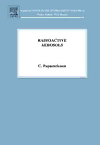
Radioactive Aerosols PDF
187 Pages·2008·2.204 MB·English
Most books are stored in the elastic cloud where traffic is expensive. For this reason, we have a limit on daily download.
Preview Radioactive Aerosols
Description:
Whenever radioactivity is released to the atmosphere, for example by the detonation of nuclear weapons or the testing of nuclear weapons or from nuclear reactor accidents that fraction of it which remains airborne for more than a few hours is liable to be attached to aerosol particles. The resulting radioactive aerosols are carried by atmospheric mixing processes until they settle out or are scavenged by precipitation. The radiation exposure pathway of maximum concern to humans is by inhalation of aerosols and their deposition in the respiratory tract. In this context, it is important to note that radioactive aerosols are commonly of natural origin alos. In particular, the associated radionuclides can be of natural terrestrial origin, such as the decay products of radon gas, or they can e cosmogenic, such as beryllium-7. The exposure of miners of uranium and other ores and minerals to radon and its aerosol-borne decay products is of major significance. The book describes the formation of aerosols, their aerodynamic size distribution, their atmospheric residence time, their sampling and measurement, the range of radioactive aerosols found and studied thus far, including man-made nuclides and radon decay products and their interaction with man, including deposition in the lung and subsequent health effects.
See more
The list of books you might like
Most books are stored in the elastic cloud where traffic is expensive. For this reason, we have a limit on daily download.
